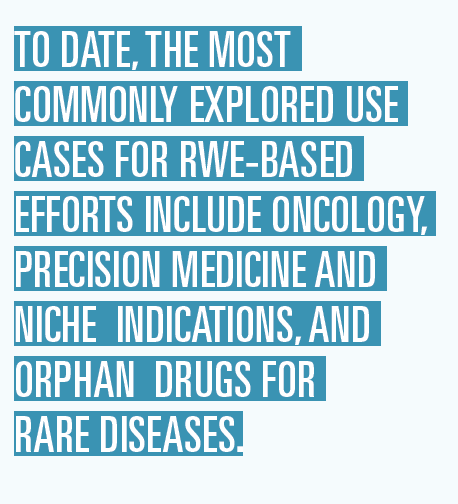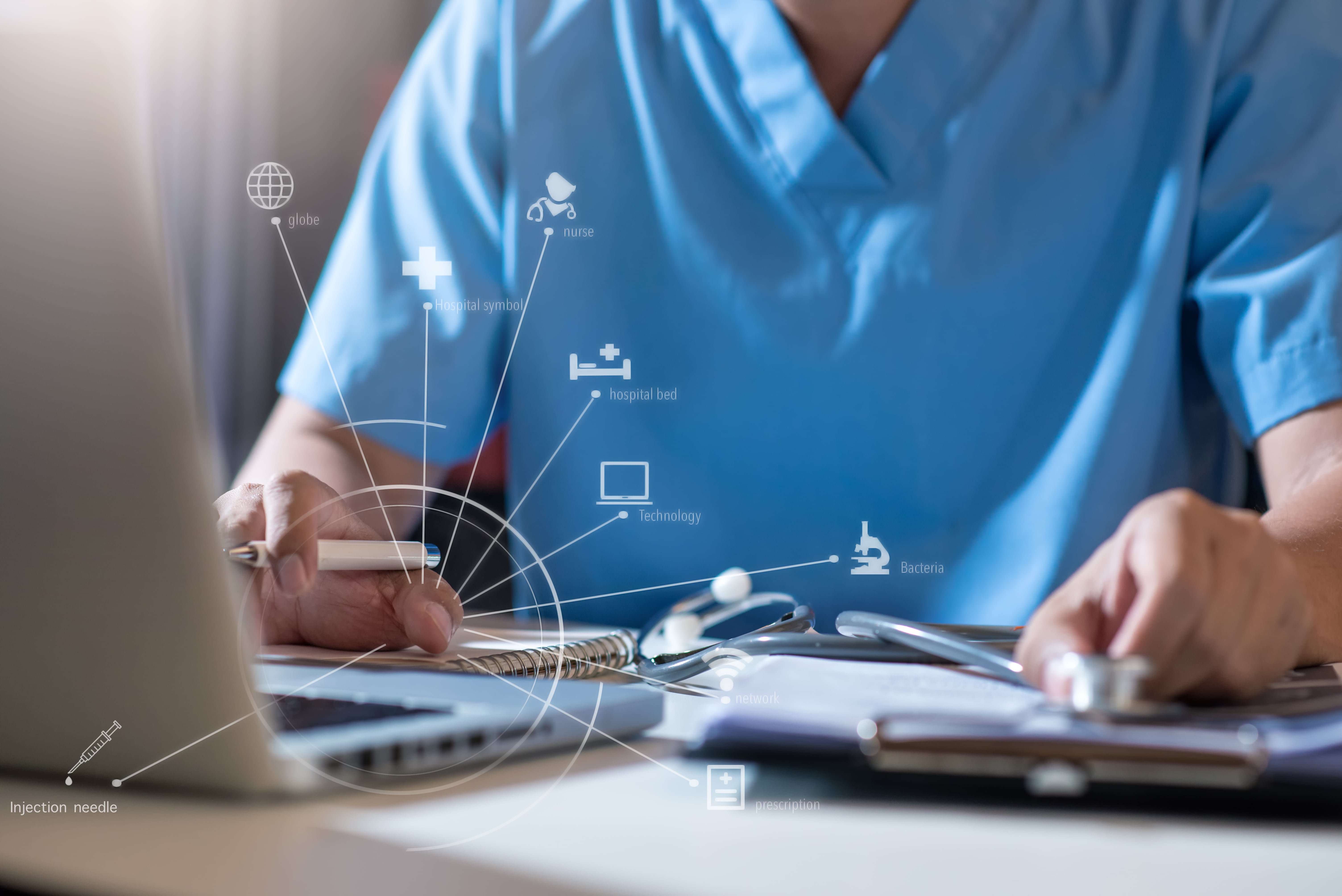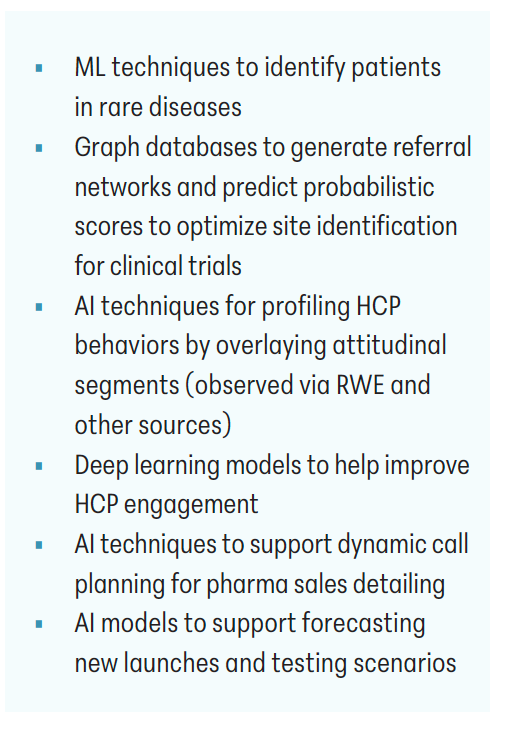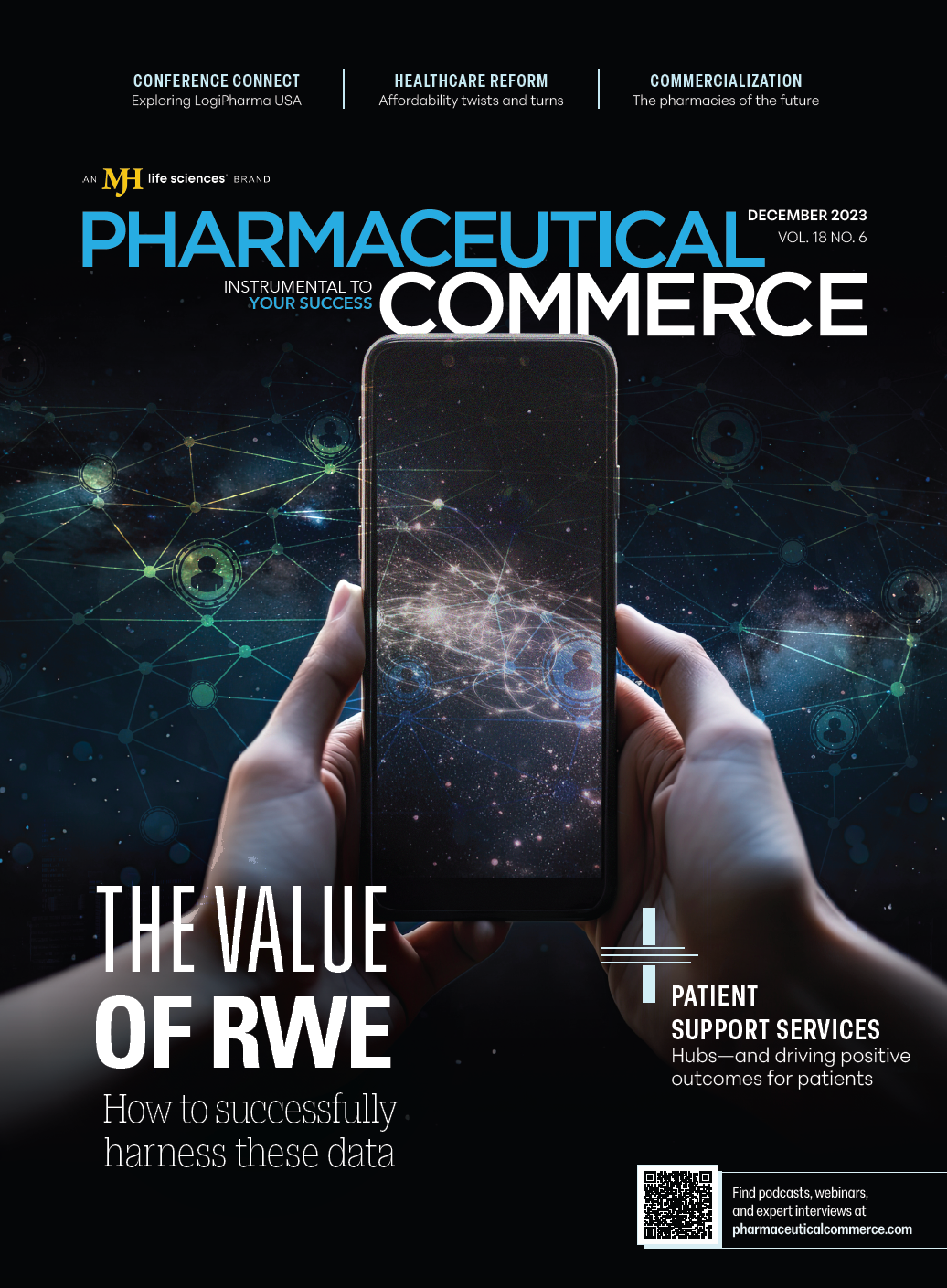The Business Case for RWE
How drugmakers can better harness real-world evidence to drive their clinical and commercial objectives, while also providing greater clarity for healthcare providers and improved access to therapy for the patients they serve.
Real-world evidence (RWE) plays an essential—and increasingly viable and visible—role in enabling evidence-based medicine. Such data-driven insights, developed after a therapy has already entered the market, help to address critical clinical and safety questions that arise between the end of the randomized clinical trial (RCT) and longer-term use of the drug in day-to-day clinical practice. Evolving regulatory precedents and frameworks that signal increased receptivity among regulators are creating momentum for pharmaceutical companies to use RWE-based initiatives to drive both clinical and financial objectives and, where possible, demonstrate competitive advantage for their products.
Analyzing real-world data (RWD) from a variety of sources—including electronic health records (EHR), claims and pharmacy data, wearable monitoring devices, patient and product registries, patient-reported outcomes (PROs), and more—helps drug manufacturers to validate how a treatment (prescribed on- and off-label) performs in patients who are decidedly more heterogeneous than those who participated in the RCT.

Scientifically validated RWE findings are able to demonstrate the safety and efficacy of the drug in patient subgroups that did not participate in the underlying trial, especially those with comorbidities; provide evidence that supports different dosing strategies or methods of drug administration; validate that the drug provides superior comparative effectiveness against a competitor product or the standard of care; verify that the therapy improves quality-of-life for patients; and articulate the overall value or competitive advantages.
Outcomes such as drug adherence, hospitalizations, physician visits, and total costs of care are much more easily collected through administrative claims data sources rather than through randomized trials, yet they still represent important information for payer decision-making, notes Nicole Ferko, SVP and general manager, value and evidence for Eversana.

To date, the most commonly explored use cases for RWE-based efforts include oncology, precision medicine and niche indications, and orphan drugs for rare diseases. "Typically, the approval of these therapies within these indications is based on small clinical trial sample sizes (sometimes single arm and small patient numbers) and so it is difficult to make an accurate judgment of how representative the data is in relation to how the product will perform over time in a real-world patient population,” says Mike D’Ambrosio, VP, head of RWE solutions for Syneos Health, adding: “It is not uncommon for pricing/reimbursement discussions and future agreements in these situations to come with a commitment to demonstrate comparable effectiveness/value in a real-world patient population.” Today, health technology assessment (HTA) bodies are increasingly asking for RWE to help address uncertainty1 and develop more longitudinal data that verifies the durability of the clinical response over time. Today, health technology assessment (HTA) bodies are increasingly asking for RWE to help address uncertainty1 and develop more longitudinal data that verifies the durability of the clinical response over time.
This makes sense because it is not uncommon for drugs approved in these narrow indications to be used broadly off-label, where there may be no other therapeutic alternative. “Such high-cost specialty therapies have the most to gain when stakeholders can study RWD related to how the therapy is faring among diverse patients who were explicitly excluded from the underlying trial,” notes John Doyle, DrPH, formerly group vice president at Exponent, now president, consulting at Fortrea, and adjunct assistant professor at Columbia University’s Mailman School of Public Health.
Staggered approvals also provide opportunities for RWE insights to be developed. For instance, “in oncology in particular, on multiple occasions, drugs that have been approved initially in the US provide opportunities for other countries to learn from ongoing RWD collected in the US and generate evidence that can help to answer the health organization’s questions in those countries,” notes Javier Jimenez, chief medical officer, Flatiron Health.
A changing paradigm
In the US, the use of RWE in regulatory submissions has grown significantly in recent years, climbing by more than 120% since FDA published its Evidence Program framework, notes Kim Riggs, VP of value & access strategy at Cencora (formerly AmerisourceBergen), according to a paper she recently co-authored.2

“In any crowded therapeutic space, the safety and effectiveness of the approved therapies have generally been established, so how do physicians choose which drug is the most appropriate for any given patient?” adds Christina Mack, chief scientific officer, real-world solutions, for IQVIA. RWD enables greater understanding of how factors such as demographics, comorbidities, geography, and lifestyle can help healthcare providers (HCPs) determine the right product to prescribe for specific subpopulations.
Meanwhile, data-driven findings can demonstrate incremental benefit, overall effectiveness, and comparative effectiveness—helping stakeholders to articulate why it is so important for the health plan to provide coverage for a particular treatment. “Through retrospective database studies, drug developers can uncover data that helps to articulate the overall disease burden, and demonstrate product value via increased adherence, fewer hospitalizations, reduced physician visits, and superior safety profiles,” says Riggs.
By way of example, Trinity Life Sciences recently conducted a RWE study on behalf of a client that showed that, after switching to the client’s therapy, patients no longer needed other supporting drugs, so their overall use of concomitant medications came down.3 “Reducing overall medication use and pill burden is a big factor in adherence and a huge win for patients, so positive news for our client,” says Nandini Hadker, partner and head of evidence strategy at Trinity Life Sciences.
Driving commercial success
“Analyses of trial data, ongoing PROs, differences in adherence and adverse event data in different patient subpopulations, more robust payer claims data over time—all of these can build support for reimbursement and in negotiations,” says Alan Crowther, general manager, products, Eversana. He notes that even if these factors don’t result in a therapy switch or a change in overall formulary placement, the effort can impact the nature of step edits and prior authorization criteria. In turn, that could translate to a more favorable drug formulary placement, thereby boosting patient access.
“Outcomes such as adherence, long-term safety, durability, and changes in healthcare resource use and costs can help to inform decision-making by payers and HTA organizations, which is especially important in markets involving constrained budgets and limited healthcare resources,” adds Ferko. One recently published, national US payer survey4 demonstrated that RWE was widely used in oncology decision-making for formulary placement of products in the absence of clinical trials.
However, the receptivity of RWE does vary by HTA body and by case scenario; there is no one-size fits all approach in this evolving landscape. Ferko also notes that the list of examples of successful reimbursement that is based primarily on RWE continues to grow.
“The use of RWE in initial negotiations for drug pricing and reimbursement has much more potential across the US compared to other parts of the world,” adds Crowther. “This is due primarily to a number of challenges that exist globally and the variable acceptance of RWE and RWD in these regions.”
RWE as a brand boost
Experts are quick to acknowledge the value of RWE across the product-development lifecycle—from early opportunity assessments to launch planning, evidence generation, brand management, commercial optimization, and post-marketing assessments. “Pre-launch, [clients] are also using RWE to assess unmet needs in the current care paradigm and identify gaps,” says Hadker. “Post-launch, they are using RWE to showcase how their product is providing value—not just clinically and economically, but humanistically as well.”
Meanwhile, RWE is also being used to inform field sales force, detailing efforts that are used to increase brand awareness among HCPs. RWE strategies and insights can help to not only inform the content of the targeted messaging, but identify and prioritize call targets, as well. “Patient-level and/or prescription data can be used to identify those HCPs or practices that represent the highest opportunity, so that pharma field representative territories and strategic call plans can be designed accordingly,” notes Adrienne Lovink, partner and head of RWE at Trinity Life Sciences, adding that this is an application that is shifting quickly to take advantage of artificial intelligence (AI) and machine learning (ML) tools to unlock more nuanced insights.
RWE studies also provide an important tool for supporting long-term safety monitoring and informing on the occurrence of rare events. “Clinical trials typically focus on clinical effectiveness endpoints, but due to their small size and limited duration, they may not be large enough to detect small differences in adverse events that are uncommon or rare,” says Ferko. “By comparison, sources of RWD can involve thousands to millions of patients, which provides a broader foundation for exploring safety outcomes.”
Biosimilars are another class of products that often typically enter crowded therapeutic spaces. “RWE is not yet being used as widely used to support the first-wave biosimilars but will likely play a bigger role to help the more sophisticated immunotherapy biosimilars—such as the PD1 and PDL1 therapies that are approaching the patent cliff—gain traction as they enter the market, adds D’Ambrosio.
Many providers and patients tend to prefer the use of the more costly originator biologics, due largely to good clinical awareness and brand loyalty, “so the ability to develop RWE that verifies the long-term safety and clinical effectiveness of lower-cost biosimilars may be what is required in some instances to support greater uptake,” explains Ferko.
Ensuring scientific rigor and validity
As all stakeholders continue to grow more comfortable with the use of RWE, it has become clear that most of the ongoing challenges are not necessarily philosophical or ideological in nature, but are science-based challenges, notes Doyle, adding: “It is still of paramount importance that high-quality RWD be gathered and analyzed using proven, state-of-the-art methodologies and the highest scientific standards.”

“When you don’t have randomization, it increases the risk of confounding and other forms of bias, as there may be missing data, there may be lag time for data availability, and so on,” continues Doyle. He adds that RWD collected under pragmatic trials that randomize patients at baseline and then convert to an observational design offers a uniquely effective approach to producing regulatory-grade RWE. These trials, however, are often expensive and time-consuming.
As a result, Ferko suggests that RWE be complementary to RCTs rather than a replacement for them—due to the hype surrounding growing data sources and AI technologies that can create blind spots to the rigor of strong trial designs.
The roles of AI, ML, and NLP
According to Doyle, one pressing challenge with using EHR data as a primary source of RWD is that roughly 80% of the data is unstructured, via narrative text, clinical notes, medical imaging data, and lab reports. However, he adds that progress in the use of natural language processing (NLP), machine learning (ML), and other advanced data-analytics methodologies allow teams to extract and standardize important information from such unstructured data sources.
Insights gleaned from complex unstructured patient data can not only provide unique perceptions into patient care and disease states but can help clinicians to identify at-risk patients based on social determinants of health. These can encompass socioeconomic, behavioral, and environmental factors that contribute significantly to most health outcomes. These insights can then be used to develop targeted interventions, notes Mack of IQVIA.
“The ongoing technological advances that are being used to analyze RWD are incredibly exciting, and we are watching this unfold every day,” adds Ferko. “These techniques have the power, speed, and accuracy that allow stakeholders to move from raw to actionable data more quickly, across diverse scenarios, to effectively harness and integrate such data at much larger scales.”
Today, the use of advanced modeling and data-analytics techniques continue to demonstrate many interesting breakthroughs, says Nabha Subramanya, VP of data science at Trinity Life Sciences. Examples include using:

While machine learning can help to generate structured data from the unstructured fields, the details regarding clinical context, intentions, and the process of data collection and data empathy can be lost,” cautions Jimenez. “Applying the right framework to maximize the integration of human abstraction and machine learning is critical to enabling effective and accurate use of RWD for research purposes.”
More recently, large language models (LLMs), especially medical LLMs, are helping to address this challenge. “Qualitative studies of clinical notes that would have been previously too large to accomplish in a reasonable amount of time can be done with relative ease, quickly, and at scale, and LLMs can be used to pull specific information directly out of clinical notes in a structured format or can summarize large notes into a single paragraph,” explains Ramaa Nathan, VP, data science and RWE insights, Eversana. “The realm of data from wearable monitoring technologies, and the use of advanced technology to transform digital images into structured data, has opened vistas for disease screening, particularly in scenarios where specialist accessibility is limited.”
“Substantial innovation in LLMs such as OpenAI’s GPT-4, ChatGPT, and Google’s LaMDA and Bard stand to have numerous benefits when potential risks are properly mitigated,” adds Mack. “As experts in healthcare and research methods, it is crucial for us to understand how these techniques perform when applied in specific healthcare settings.” IQVIA recently published a white paper4 that shares benchmark results of the accuracy of these techniques when applied in specific healthcare settings, to help users understand the benefits, risks, and tradeoffs in accuracy—and tie those considerations into value where these techniques are used.
References
1. Dabbous, M., et al. A Review of Real-World Evidence in HTA Decision-Making of Gene Therapies in the US, Canada, UK, EU4 and Japan, Poster presented at ISPOR US. May 2023. https://www.ispor.org/docs/default-source/intl2023/ispor-us-evidera-2023rwe-in-htas-for-gtsposterhta34final127079-pdf.pdf?sfvrsn=ad2f91fc_0
2. Tormey, K.; Gaiser, A.; Danavar, A.; Campbell, D.; Riggs, K. RW1: A Review of Real-World Evidence Use in United States Regulatory Submissions. ViHRI. 2020. (23) 1, 383-384. https://doi.org/10.1016/j.jval.2020.04.1491, https://www.valueinhealthjournal.com/action/showPdf?pii=S1098-3015%2820%2931679-X
3. Faraone S. et. al., A Retrospective Real-World Analysis Demonstrating the Value of Azstarys for Patients with Attention-Deficit Hyperactivity Disorder, Poster 112, Psych Congress 2022. https://corium.com/pdf/adhd-treatment-patterns-using-azstarys.pdf
4. Navigating New Large Language Models in Healthcare NLP. IQVIA White Paper. July 2023. https://www.iqvia.com/-/media/iqvia/pdfs/library/white-papers/navigating-new-large-language-models-in-healthcare-nlp.pdf
